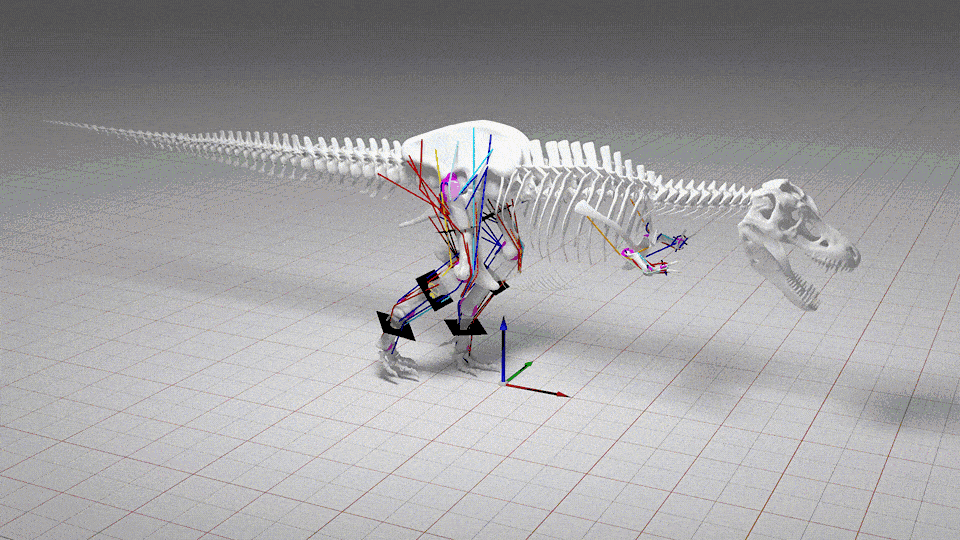When you purchase through link on our website , we may earn an affiliate committee . Here ’s how it works .
Perhaps the most famous quenching in human chronicle was that of the flightless fogey bird . Many whodunit continue about the bird , its life-time and death . Now , newfangled optical maser - scanning and an examination of a dodo skeleton collected more than 100 year ago are revealing young anatomy of the bird and secrets of its lifestyle . Here are ikon of the dodo raspberry and optical maser scans of its skeleton . [ translate full story on the dodo bird ’s skeleton ]
Painting a bird

The dodo was a flightless birdie aboriginal to the islet of Mauritius in the Indian Ocean . It start extinct by 1693 , less than 100 years after the Dutch discovered Mauritius in 1598 . The chick , related to pigeons , was about 3 feet ( 1 beat ) tall , was killed off by animals such as rats and pigs that were introduced to the island , either accidentally or by choice . Here , George Dante paints a example of a dodo birdie . Dante knead with Phil Fraley Productions to hearten the out flightless bird , commission in 2005 for a museum in Singapore . ( Image Credit : George Dante )
Fat or slender ?
It ’s hard to say precisely what the fossil bird would have looked like when alive , as before cameras artists painted newly find out animals . Such artists seem to have been more interested in " depicting plump or colorful animal than memorialize their true likeness,“according to the Oxford University Museum of Natural History . Many people did , however , think the fossil bird was a chubby animal , the museum say . However , measurements of a dodo specimen at the Oxford museum and other dodo bones advise otherwise , revealing a much slender bird . Here , a reconstruction of the fossil doll . ( Image Credit : Dreamstime.com )

Dodo skull
To shed Modern light on the mysterious bird , for which scientist have many owing interrogation , Leon Claessens , a vertebrate fossilist at the College of the Holy Cross in Worcester , Massachusetts , and confrere optical maser - run down the Port Louis skeleton , and create a digital model of it . Here , a 3D digital model of the skull of the only complete skeleton of a undivided dodo , found in 1903 on Mauritius . The fossil had an extremely robust jaw and the researchers go for to look into how the jaw brawn may have worked . " My upright guess is that it was eating hugely heavy germ , but who knows , maybe it was eating crabs , " Claessens say . ( Image Credit : Leon Claessens and Mauritius Museums Council )
Complete skeleton

The only known complete skeleton belonging to an individual fossil was discover in about 1903 by amateur naturalist and Samuel Barber Etienne Thirioux . He found the skeleton near Le Pouce Mountain on the island of Mauritius . Here , a 3D digital good example created with laser scanning of the so - call Port Louis fogy skeleton . ( Image Credit : Leon Claessens and Mauritius Museums Council )
No sternum ?
Here , research worker Andy Biedlingmaier scan the only eff complete skeleton from a single dodo . From the scans , the researchers discovered that unlike a closely touch out flightless pigeon , call the unlike the Rodrigues solitaire , the fogy did n’t have a keel on its breastbone ( or sternum ) . The Rodrigues pigeon was know to have used its wings in scrap ; as such the research worker speculate the Raphus cucullatus fought each other less often than the Rodrigues patience did . ( Image Credit : Leon Claessens and Mauritius Museums Council )

A complex
In addition to scanning the complete skeleton , the investigator also laser - scanned a composite dodo skeleton in the cupboard that Thirioux had also created ; this one was a composite of two or more frame housed at the Durban Museum of Natural Science in South Africa . ( Image Credit : Leon Claessens and Durban Natural Science Museum )




















